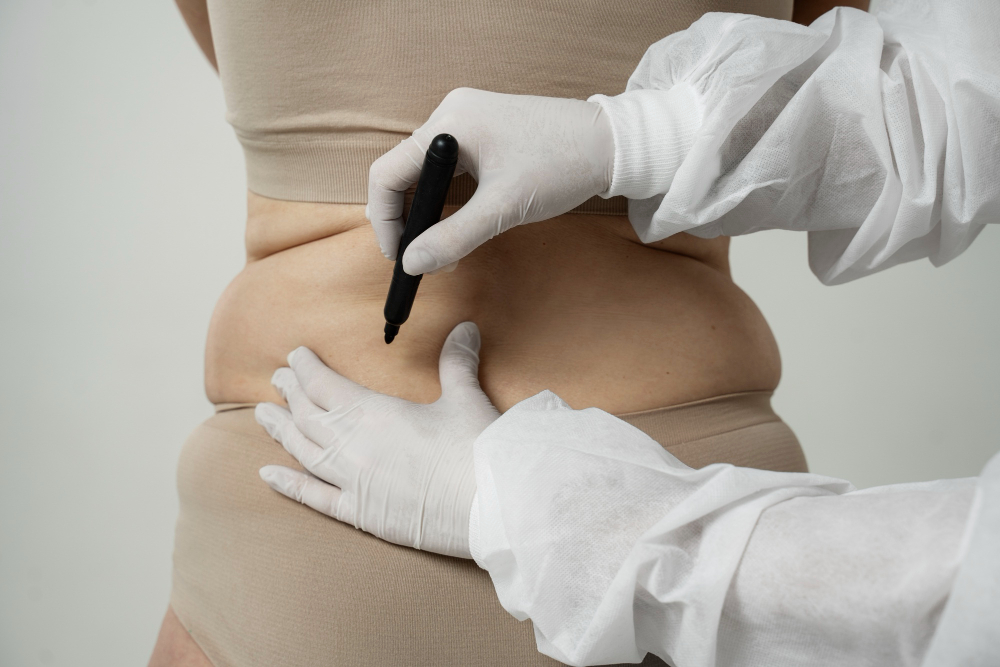Post-Surgical Swelling: The Body’s Natural Reaction
The first few weeks or even months after any surgery are dominated by swelling. Your body’s immune system floods the treated area with fluids to jump-start healing, resulting in temporary puffiness around the abdomen and waist. What You Can Do:- Wear Your Compression Garment: Most surgeons recommend wearing a compression garment around the clock. Not only does it help reduce swelling, but it also supports the newly contoured tissue and encourages proper healing.
- Stay Gently Active: Once your surgeon gives the go-ahead, light walking can improve circulation and help flush excess fluids. Avoid overexertion, though—strike a balance between rest and gentle movement.
- Hydrate, Hydrate, Hydrate: Consuming enough water might seem counterintuitive if you’re trying to reduce fluid retention, but staying hydrated actually helps your body regulate fluid balance and reduce overall swelling.
Weight Fluctuations: Surgery Is Not a Magic Wand
A tummy tuck removes excess skin (and sometimes fat) but doesn’t prevent weight gain or changes in body composition afterward. If you gain weight in the months following your surgery—whether due to diet, inactivity, or hormonal factors—it can show up around your waistline.What You Can Do:
- Adopt a Balanced Diet: Focus on nutrient-dense foods—lean proteins, whole grains, fruits, and vegetables. This helps maintain your surgical results while supporting your overall health.
- Stay Active Long-Term: Once fully healed, aim for a mix of cardio and strength training. Building lean muscle can help keep your waistline toned and avoid unwanted weight gain.
- Track Progress Gently: Keep an eye on your weight fluctuations without obsessing over the scale. Consistent, healthy habits are more effective than quick-fix solutions.
Fluid Retention and Seroma Formation
Sometimes, fluid can accumulate under the skin post-surgery, forming what’s called a seroma. Seromas appear as pockets of fluid that can enlarge your midsection. While smaller ones might resolve on their own, larger or persistent seromas require medical intervention.What You Can Do:
- Attend Post-Op Checkups: Regular appointments allow your surgeon to detect any seromas early. If you suspect a seroma due to localized swelling or a fluid-like bulge, mention it right away.
- Follow Drainage Guidelines: If you have surgical drains in place, care for them exactly as instructed to help minimize fluid buildup.
- Prompt Treatment: If a seroma is diagnosed, a simple in-office procedure can drain it and restore a smoother contour.
Muscle Laxity & Over-Exertion
During a full tummy tuck, surgeons often tighten the abdominal muscles (especially if there’s diastasis recti, or separation of the abs). If those muscles are strained too early—perhaps by heavy lifting or intense workouts—you could compromise the repair, leading to a less-defined waist.What You Can Do:
- Ease Into Exercise: Follow your post-op exercise timeline closely. A gentle return to activity helps the muscles heal in their new, tightened position.
- Core Conditioning With Care: Once cleared, focus on low-impact core exercises under a professional who understands post-surgical bodies.
- Mindful Movements: Avoid lifting heavy objects or twisting abruptly, especially in the early weeks of recovery.
Scar Tissue & Internal Healing
Tummy tuck incisions often leave external scars but the hidden internal scarring sometimes affects how your waistline appears. Internal scar tissue (adhesions) can form as part of the healing process, potentially causing tightness or a change in the way tissue settles.What You Can Do:
- Scar Massage (If Approved): Once you have the all-clear from your surgeon, gentle massage can help break up scar tissue and improve mobility around the incision area.
- Be Patient: Internal healing can take up to a year or more. Your body continuously remodels collagen, meaning gradual improvements can still happen long after the surgery date.
Hormones & Water Retention
Stress hormones released during recovery can cause fluid retention, making your waist look larger. Other hormonal changes—like menopause or shifts in birth control—can also alter where your body stores fat and water.What You Can Do:
- Reduce Stress: Incorporate calming activities like gentle yoga, breathing exercises, or short daily walks to help regulate cortisol levels.
- Healthy Lifestyle Habits: Adequate sleep, balanced nutrition, and moderate exercise go a long way in stabilizing hormones and reducing unwanted bloating.
- Consult a Professional: If you suspect hormonal imbalances, consider speaking with an endocrinologist or nutritionist to develop a tailored plan.
Unrealistic Expectations: Embrace Your Unique Shape
Sometimes, dissatisfaction with waist size after a tummy tuck stems from an ideal image that doesn’t line up with surgical possibilities or your natural anatomy. Your body type, skin elasticity, and overall health play a role in your final appearance.What You Can Do:
- Open Communication: Before surgery, share your expectations clearly with your surgeon. Post-surgery, keep the dialogue going if you have any questions or concerns.
- Celebrate Small Victories: Compare how you looked before surgery to your current progress. Even subtle improvements can make a difference in self-confidence over time.
- Consider Complementary Procedures: In certain cases, liposuction or other contouring treatments might help refine your waist further. Always discuss options with a board-certified professional.




